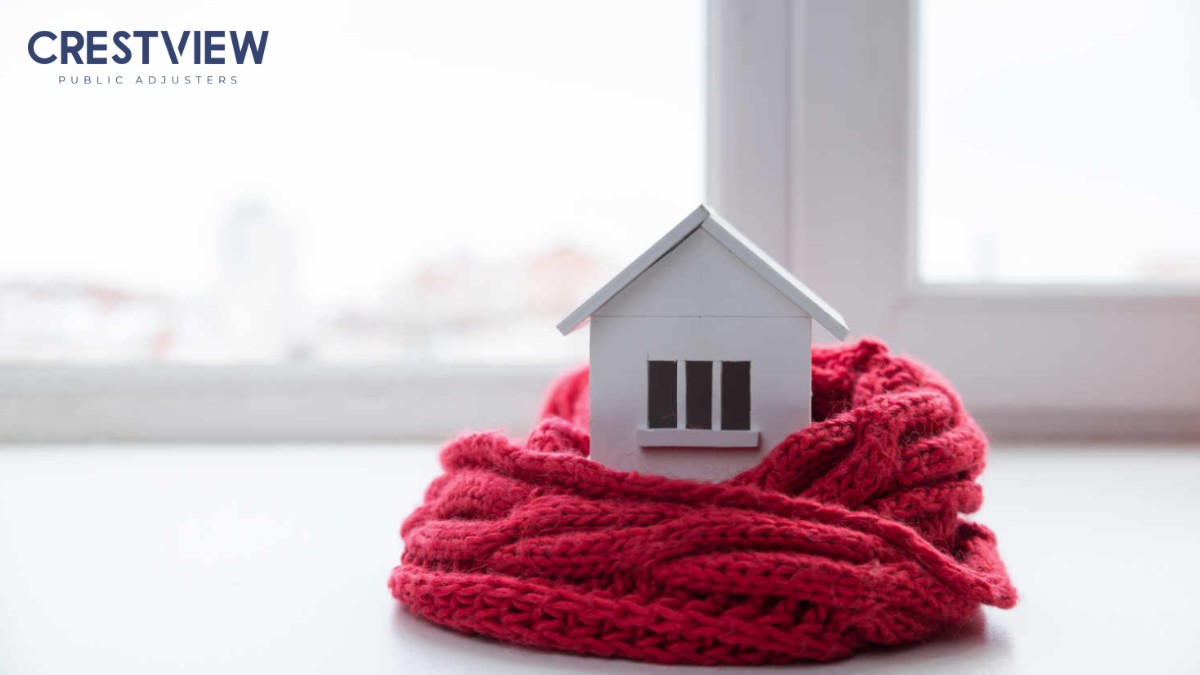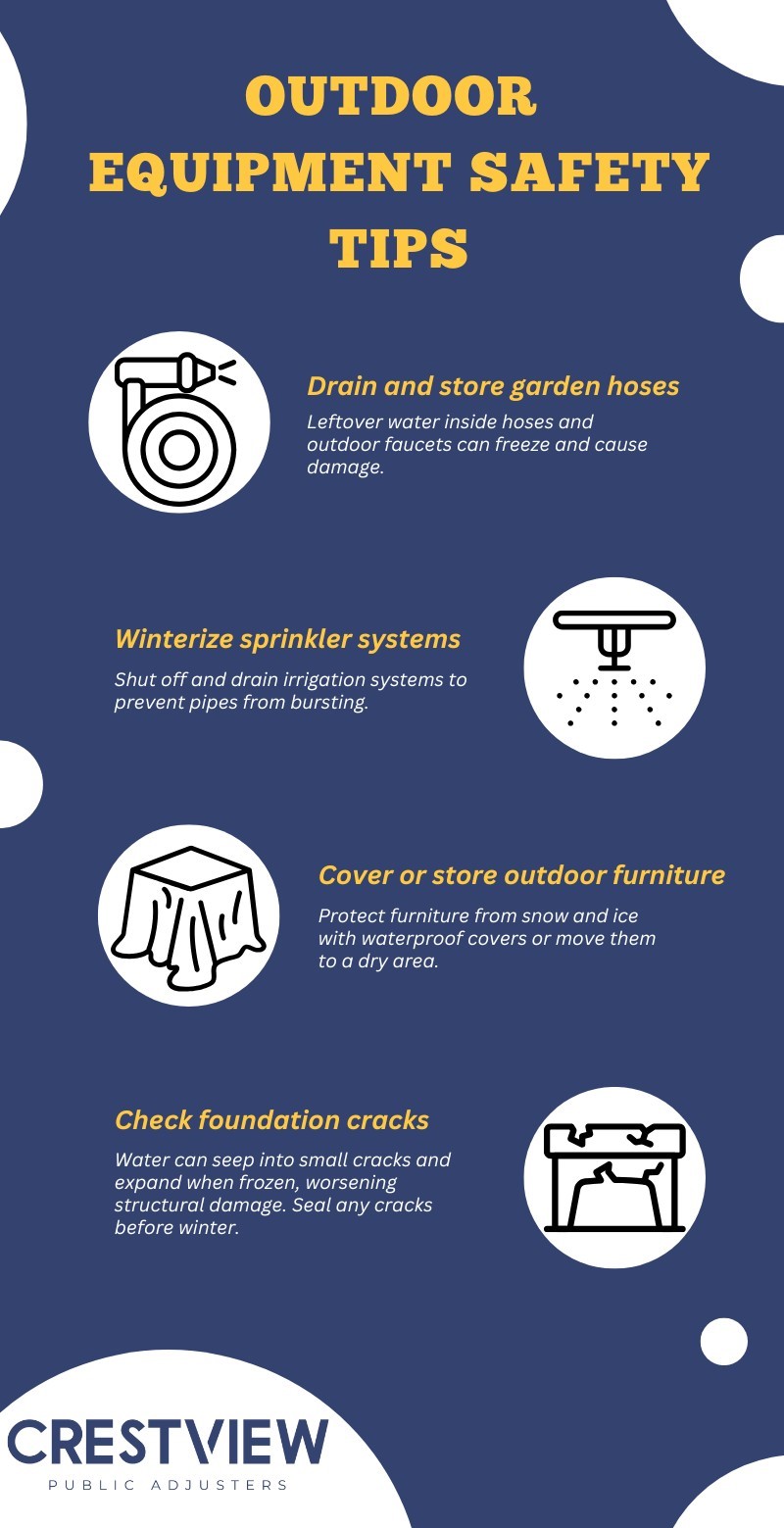Key Points:
- Harsh winter conditions can cause serious damage to homes, leading to costly repairs.
- Preventative maintenance is key to avoiding structural damage, frozen pipes, and roof issues.
- Homeowners can protect their property with insulation, drainage checks, and emergency preparedness.
Winter-proofing your property is crucial to prevent damage from freezing temperatures, ice buildup, and heavy snow. Without proper maintenance, homes can suffer from burst pipes, roof collapses, and foundation cracks. Winterizing involves sealing drafts, insulating pipes, cleaning gutters, and preparing heating systems to ensure your home remains safe and energy-efficient. Below, we’ll break down the essential steps to protect your property from winter’s worst.
Understanding Winter’s Impact on Your Home
Winter weather isn’t just about cold temperatures—it’s a combination of snow, ice, wind, and moisture that can lead to costly structural damage. According to the Insurance Information Institute, winter storms caused over $2 billion in insured losses in the U.S. in 2022 alone. The risk is even greater if your home is not properly maintained.
As temperatures drop, pipes freeze and burst, roofs weaken under snow weight, and heating systems struggle to keep up. Poor insulation can drive up energy costs, while clogged gutters lead to ice dams, causing water to seep into walls and ceilings. By taking proactive steps now, you can prevent expensive repairs and maintain your home’s integrity all season long.
Inspect and Reinforce Your Roof
Your roof is your home’s first line of defense against winter storms. Heavy snowfall, ice buildup, and freezing temperatures can weaken its structure, leading to leaks or even collapse. A thorough roof inspection and reinforcement can prevent these issues.
- Check for missing or damaged shingles. Cracked or missing shingles can allow water to seep in and cause interior damage. Replace them before the first snowfall.
- Clean gutters and downspouts. Clogged gutters trap water, which freezes and forms ice dams. These dams force melting snow under the shingles, leading to leaks.
- Assess attic insulation and ventilation. Poor attic insulation leads to heat escaping, causing snow on the roof to melt and refreeze at the edges. Proper insulation and ventilation help regulate temperature and prevent ice dams.
- Trim overhanging branches. Snow-laden branches can break and damage your roof. Trimming them in advance reduces this risk.
- Consider a roof rake. If heavy snow accumulates, use a roof rake to safely remove excess weight and prevent structural strain.
Protect Your Plumbing from Freezing
Frozen pipes are one of the most common and expensive winter-related home damages. When water inside pipes freezes, it expands, causing pipes to burst and flood your home. Preventing this issue requires insulation, temperature regulation, and routine monitoring.
- Insulate exposed pipes. Wrap pipes in unheated areas (basements, crawl spaces, garages) with foam pipe insulation to prevent freezing.
- Keep indoor temperatures steady. Maintain your thermostat at at least 55°F (13°C), even when you’re away, to prevent pipes from freezing.
- Let faucets drip. A slight trickle of water in extreme cold can prevent pipes from freezing by keeping water moving.
- Seal air leaks. Cold air entering through cracks and gaps can freeze pipes. Use caulk or weatherstripping to seal leaks near plumbing.
Know how to shut off water. If a pipe freezes and bursts, turning off the water supply immediately can help reduce the damage.

Improve Insulation and Seal Air Leaks
A poorly insulated home loses heat, driving up energy bills and increasing the risk of ice dam formation. Sealing air leaks and adding insulation keeps your home warm and energy-efficient throughout the winter.
- Check for drafts. Use a candle or incense stick near doors and windows to detect air leaks. If the flame flickers, there’s a draft that needs sealing.
- Install weatherstripping and door sweeps. These simple fixes prevent cold air from sneaking in under doors and around windows.
- Upgrade attic insulation. The attic is a major source of heat loss. Adding insulation can cut heating costs by 10–50%, according to the U.S. Department of Energy.
- Use thermal curtains. Heavy curtains add an extra layer of insulation to windows, trapping heat inside.
- Close chimney flues. When not in use, keep the fireplace damper closed to prevent heat from escaping.
Maintain Your Heating System
Your heating system works hardest in winter, and a breakdown in freezing temperatures can be dangerous. Regular maintenance ensures efficiency and prevents unexpected failures.
- Schedule a furnace tune-up. Have an HVAC professional inspect and clean your furnace before winter to ensure it runs efficiently.
- Replace air filters. Dirty filters make heating systems work harder, increasing energy costs and reducing efficiency. Change filters every 1-3 months.
- Test carbon monoxide detectors. Heating systems can produce carbon monoxide leaks, which are deadly if undetected. Ensure your detectors are functional.
- Bleed radiators. If you have a hot water heating system, releasing trapped air improves efficiency and heat distribution.
- Inspect ducts for leaks. Sealing ductwork prevents heat loss and improves system performance.
Prepare for Power Outages and Emergencies
Severe winter storms can knock out power, leaving you without heat and light. A well-prepared home can withstand outages without major disruptions.
- Stock up on emergency supplies. Keep flashlights, extra batteries, blankets, non-perishable food, and bottled water on hand.
- Invest in a backup power source. A portable generator or battery-powered heater can provide temporary heat during outages.
- Have a snow removal plan. Keep shovels, snow blowers, and de-icing salt ready to clear driveways and sidewalks safely.
- Keep pipes from freezing during an outage. If the heat goes out, open cabinet doors to let warm air reach pipes and let faucets drip slightly.
Secure Your Exterior and Outdoor Equipment
Your home’s exterior and outdoor appliances also need protection from winter damage. Neglecting these areas can lead to costly repairs in spring.

Need Help with Winter Damage Claims? Contact Crestview
Even with the best preparation, winter storms can still cause unexpected damage to your home. If your property suffers from ice dam leaks, roof collapses, or burst pipes, you don’t have to handle insurance claims alone.
Crestview specializes in public adjusting for winter damage claims in New Jersey, New York, and Florida. We help policyholders navigate complex claims, ensuring you get the compensation you deserve. Don’t let winter storm damage leave you struggling—contact Crestview today for expert claim assistance.

